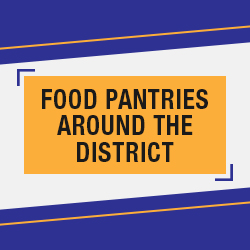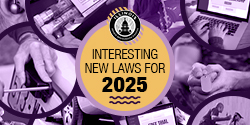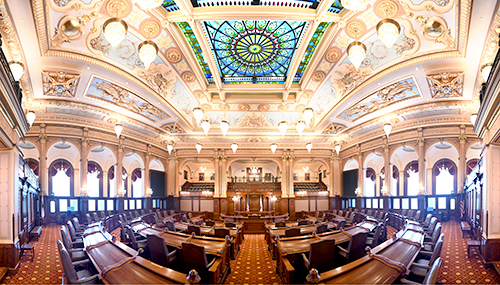Gov. Pritzker's comments today focused on hospitalization and infection metrics, some of them indicating the state's measures had the intended effect of bending the curve. Among the metrics spotlighted by the governor:
- The doubling rates of infection and deaths measure how many days it takes for the state's number of cases and deaths to double, with a higher number being better. The infection doubling rate was 2 days on March 22 and has grown to 8.2 days as of April 12. At the beginning of April, the death doubling rate was 2.5 days, and has grown to 5.5 days.
- While the number of COVID-19 patients in hospitals has increased, the state's efforts to increase available space in hospitals has so far kept pace with it.
- COVID patients today occupy 40% of the state's ICU capacity, down from a high of 43%.
- COVID patients are using 25% of the state's total ventilators, down from a high of 29%.
- While no hospitalization region is below 15% of hospital bed availability, Pritzker said individual hospitals in some cases are at or approaching capacity, and that he will not hesitate to step in and begin directing ICU patients to other facilities if it becomes necessary.
- 3,600 retired and out-of-state medical professionals have volunteered to return to the medical workforce as a result of the state's recruitment drive.
Pritzker said keeping the current measures in place is necessary, and reiterated his assertions that testing, treatment and tracing of infections must be ramped up in order for the measures to be relaxed, calling it a "new normal."
"No matter what the president may say, I will do what's best to safeguard the health and safety of Illinois residents," Pritzker said. "That means test, trace and treat. I'm hopeful the president will help us accomplish that, because that is what will make it safe for people to return to their lives. We need to design a new normal."
IDPH Director Dr. Ngozi Ezike reported 1,222 new confirmed cases of COVID-19, for a total of 23,247 cases, and 74 additional lives lost bringing the state's total death toll to 868.
Speaking on the department's ongoing research of outcomes, Dr. Ezike said surveys of those who have recovered from COVID-19 show about 69% of patients fully recovered with no symptoms 28 days after reporting infection, but also stressed that some who were asked did not respond.
In response to news that poll workers have tested positive, reporters continue to ask questions about the primary election with the governor reminding them that he does not have the legal authority to change elections. That requires passing a state law. He said his administration was assured that election authorities had the situation under control and would have PPE for poll workers.
Looking forward, he said he thinks the state should expand mail-in balloting for November.
Asked about when he will update his budget proposals, the governor said he will be talking about that later this week.
“This is going to be a very, very difficult fiscal financial challenge,” he said.
He said Illinois’ problems are not unique and point to why the federal government needs to provide assistance to all the states.
Last week the governor said he couldn’t envision large crowded events this summer. That led to a question today about whether the Illinois State Fair would be canceled.
The governor said decisions will have to be made soon as contracts need to be signed. He said he enjoys the fairs and would like to be able to have both – Springfield and DuQuoin – but also wants to make sure infections don’t spike leading to hospitalizations and deaths.













 © 2025 Illinois Senate Democratic Caucus
© 2025 Illinois Senate Democratic Caucus